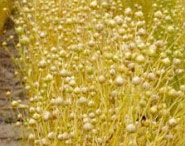There’s a new player fueling the alternative energy market and it’s picking up speed as fossil fuels continue to fall short. Camelina, an oilseed crop in the same family as mustard, is currently being grown throughout the United States and Canada and crushed to produce biodiesel by Great Plains – The Camelina Company.
With several crushing partners in North America, Great Plains has produced over 10 million road miles of camelina biodiesel to date, and plans to boost production to 100 million gallons by the year 2012.
The U.S. Energy Bill signed at the end of 2007 increases the Renewable Fuels Standard (RFS) to 36 billion gallons by 2022. But, with the rising cost of consumer goods, this mandate has come under fire recently as the primary reason land is being used to grow crops for fuel instead of for food production.
Camelina offers a solution for reaching this biodiesel production goal by providing a sustainable, low-input biofuel feedstock option that does not interfere with food production. Camelina is virtually 100 percent efficient. It can be harvested and crushed for oil and the remaining parts can be used to produce high quality omega-3 rich animal feed, fiberboard and glycerin.
Camelina does not take away from land currently being utilized for food production because it has the ability to grow on marginal land utilizing very little moisture. Camelina also fits into many farming operations as an excellent rotational crop to break the cycle of continuous small grains cropping. Even more important to some growers, camelina has been shown to enhance the yield of subsequent crops such as wheat by up to 15 percent. Camelina fits nicely in low rainfall regions of our state and creates an additional low-input rotational crop, which aids in the reduction of weed and disease cycles.
Great Plains pioneered camelina production on a commercial scale just three years ago, contracting with growers throughout the United States and Canada to grow the crop. The company has invested over 10 years in the science and agronomic of camelina and continues to develop higher-yielding, higher oil-content camelina varieties.

